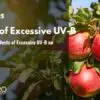If you are looking for eco-friendly growing tips that are straightforward to use in your nursery, relax, you are at the right place. Building an organic greenhouse is not only a terrific way to enjoy high-quality harvests, but it also ensures that your family is eating the healthiest meals possible.
We have rolled up our sleeves and scoured the web for hours on end and have come up with tips to make your nursery friendly to the environment.
But first off, let’s see why you should make your nursery eco-friendly.
Importance of Making Your Nursery Care Eco Friendly
Here are a few reasons why you should make your nursery eco-friendly.
- You minimize your cooling costs by planting trees and shrubs at strategic locations.
- Producing your eco-friendly nursery helps to reduce carbon emissions.
- An eco-friendly nursery replaces nutrients in the soil.
- Caring for your eco-friendly nursery helps beneficial insects and birds.
- Caring for your eco-friendly nursery helps prevent soil erosion.
- Your family gets to enjoy chemical and pesticide-free food.
Let us now look at how to make your nursery care eco-friendly.
Tips on How to Make Your Nursery Care Eco Friendly
1. Begin Small
If you’re new to gardening or trying to make your nursery eco-friendly for the first time, it’s always ideal to begin small. If you’re new to this, you should expect a lot of testing as you learn how to grow your seedlings as efficiently as possible.
A massive project may need more dedication, and you may find yourself giving up midway. You can sow the seedlings tightly to make the most use of space, and after you obtain the results you desire, you can start to expand your eco-friendly nursery.
2. Soil Quality
Soil quality will determine the health of your seedlings. Enriching the soil should be the first step in creating an eco-friendly nursery. You’ll want to start with nutrient-dense, high-quality soil for your nursery. Compost and other organic additions might help enhance the quality of your soil if it isn’t up to par.
You should also work tenderly on the soil to detach the soil particles. Optimum soil consistency helps in proper airflow and drainage in the earth. All of this will be advantageous to your seedlings.
3. Make Eco-Friendly Compost on Your Own
Making your compost is more environmentally friendly and less expensive than purchasing natural fertilizer. You’ll also get rid of the rubbish that would otherwise wind up in landfills.
Composting is simple, and all you need is a compost container or a garden pit to get started. Cold composting entails gathering garden and kitchen wastes and layering them in a bin or pit. Within a few weeks, the yard waste will decompose, Enriching leaving you with your very own eco-friendly compost.
4. Use Pest Control Solutions That Aren’t Harmful to The Environment
No matter how hard you try to prevent pests from your eco-friendly nursery, they will eventually find their way into your garden. Fortunately, there are many non-chemical methods for controlling pests in the nursery.
However, before you start spraying your pest management concoctions, you should first figure out what kind of bugs are eating on your seedlings. You’ll be able to control the invasion and stop wasting more products this way.
Use natural and safe pesticides like neem oil, citrus oils, and salt spray. You can also use insect protection nets to keep pests away from your produce.

5. How to Weed Your Eco-Friendly Nursery
Weeds appear out of nowhere. Apart from attracting pests, weeds also compete for nutrients and water with your plants. For more productive results, you should consider doing weeding daily. It’s easier to use your hands to pull out weeds after rainfall or irrigate your nursery.
There are different ways of pulling out weeds. One method is to pull out the roots while gently squeezing the stem’s base. Alternatively, dig out the root system with a weeding trowel. You can also remove the top of the weed with a hoe, taking care not to harm any crops. It’s important to remember that weeds can regrow if the root isn’t eliminated.
6. Provide Good Airflow
Avoid overexposing your nursery to solid winds or turbulence. An open position will allow more sunlight in the nursery. Concrete walls or fences provide shelter, but they can also generate harmful swirls on the leeward side when the wind blows up, so planting too close to walls is not a wise idea
It’s critical to have good ventilation in your garden if you want your plants to grow strong. It also helps prevent fungal diseases and makes the garden less attractive to harmful insect pests like whiteflies, who prefer a calm, humid atmosphere.

7. Sunlight
Check for sunlight availability before deciding where to position your eco-friendly nursery. Place wood pegs in the shadowy areas and track when your nursery location has full sunlight cover and when shadows appear.
If your conservatory does not receive at least six hours of direct sunlight throughout the day, you may need to modify your nursery’s size, position, or even area.
8. Mulch Your Eco-friendly Nursery
Mulching your nursery will save you a lot of time, whether you’re caring about flower or vegetable seedlings. While mulching is inconvenient, it has numerous advantages: when you apply mulch correctly, you reduce the time it takes to irrigate, weed, and combat pests. Overall, this results in healthier seedlings in your eco-friendly nursery.
9. Irrigate Your Nursery
It’s crucial how you irrigate your nursery. Water as close to the roots as possible, avoiding wetting the leaves, which wastes a lot of water and promotes disease. Using a watering can allow you to get in amid the leaves, and you may examine your seedlings while you water them.
Never irrigate in the heat of the day since most of the water will evaporate rapidly.

When the topsoil appears dry, there is usually plenty of water beneath. To determine how parched the ground truth is, dig a hole. Leave watering for another day if the soil is damp at the roots.
Conclusion
There’s absolutely no reason why you should not have an eco-friendly nursery when you follow these simple tips. Aside from that, you get to enjoy chemical and pesticide-free fresh foods. Your environment is also taken care of because you help avoid soil erosion even as your soil gains more nutrients.
Eyouagro develops advanced and environmentally friendly methods to protect your plants through adjusting microclimate, preventing birds and insects, resisting wind and hail, and being safer and healthier food to the family
Get in touch with us at info@eyouagro.com for more information about the selection of crop covers and other horticulture solutions or recommendations regarding a specific product.









